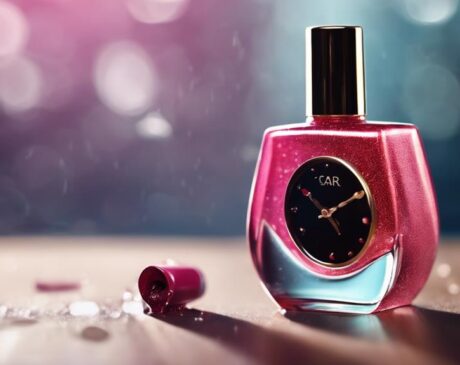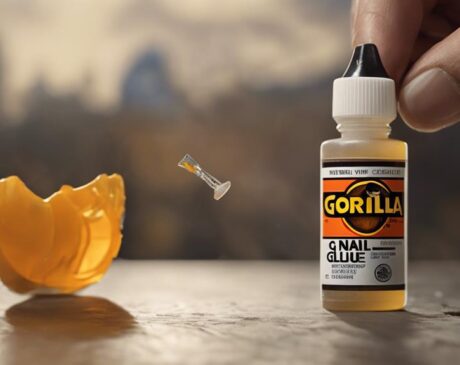Why Does My Nail Polish Never Dry?
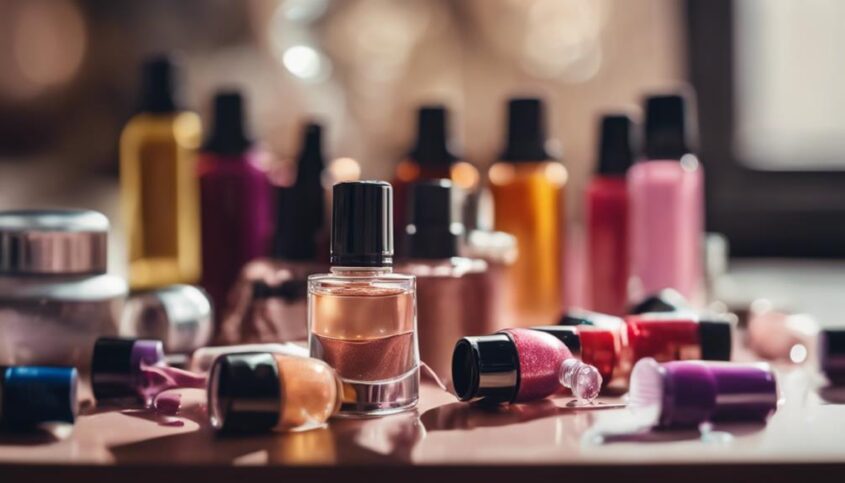
Nail polish may not dry due to incorrect application techniques, thick layers slowing drying, and poor ventilation. High humidity can also prolong drying time, leading to smudges. Using old or expired polish affects drying, and thick coats dry unevenly. Additionally, insufficient drying time can cause smudges and dents. Consider these factors for efficient drying.
Key Takeaways
- Apply thin, even coats to promote quicker drying and avoid thick layers that hinder evaporation.
- Ensure proper ventilation to aid in faster evaporation and prevent air bubbles from forming.
- Balance humidity levels for efficient drying – too high causes smudges, too low leads to streaks.
- Check nail polish expiration dates to prevent issues with chemical breakdown and uneven coats.
- Allow sufficient drying time; consider quick-dry topcoats or formulas for accelerated drying and durable finish.
Incorrect Application Technique
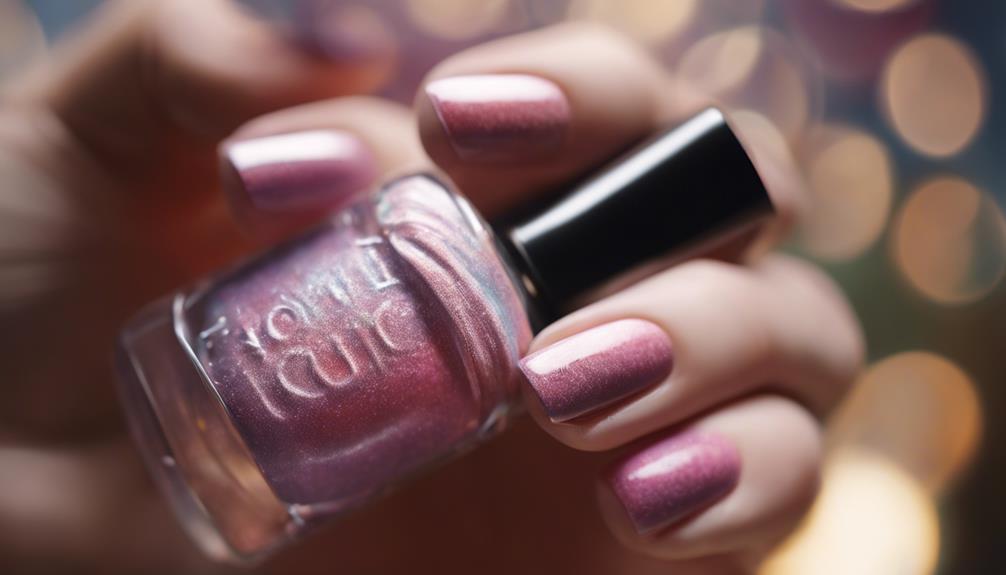
When applying nail polish, an incorrect technique can significantly impact the drying process. One common mistake is applying thick layers of nail polish. Thick layers take longer to dry as the solvents trapped within struggle to evaporate efficiently. It is advisable to apply thin, even coats to promote quicker drying. Additionally, improper ventilation during the application process can hinder drying. Ensuring a well-ventilated area will help the solvents evaporate faster, leading to quicker drying times.
Furthermore, the way in which the nail polish is applied can also affect drying. Brushing the polish on too quickly can create air bubbles, prolonging the drying process. To combat this, apply the polish slowly and evenly to achieve a smooth finish and faster drying time. Lastly, avoid shaking the nail polish bottle vigorously before application, as this can introduce air bubbles into the polish, leading to a longer drying time. By implementing these innovative techniques, one can optimize the nail polish application process for quicker and more efficient drying.
Humidity Levels
Humidity levels play a crucial role in the drying process of nail polish, impacting how quickly or slowly the polish sets and hardens on the nails. High humidity levels slow down the evaporation of solvents in the nail polish, prolonging the drying time. Conversely, low humidity levels can cause the polish to dry too quickly, leading to a less smooth and even finish. Achieving the right balance of humidity is key to ensuring your nail polish dries efficiently and effectively.
| High Humidity | Low Humidity |
|---|---|
| Slower drying time | Faster drying time |
| Smudges and dents may occur | Potential for a streaky finish |
| Longer wait before applying additional coats | Risk of the polish becoming too thick |
| Increased likelihood of air bubbles forming | Difficulty in achieving a smooth application |
| Recommended to use quick-dry topcoat | Advisable to work in smaller sections to prevent premature drying |
Maintaining an optimal environment with moderate humidity levels can significantly improve the overall nail polish application experience, ensuring a flawless and durable finish.
Old or Expired Nail Polish
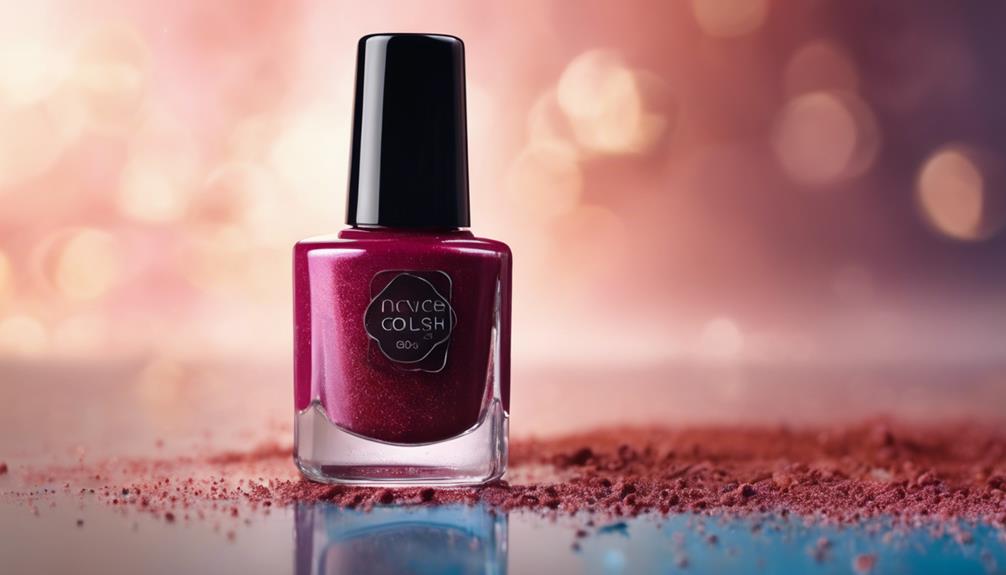
The quality and effectiveness of nail polish can be compromised by its age or expiration date, potentially leading to issues with drying and application. Over time, the chemicals in nail polish can break down, causing the product to thicken or become clumpy. As a result, applying old or expired nail polish can result in uneven coats, longer drying times, and a less polished finish.
Using old nail polish not only affects the aesthetic outcome but can also impact the health of your nails. Expired nail polish may contain harmful bacteria that can lead to infections or cause your nails to become brittle and weak. To ensure optimal results and maintain the health of your nails, it is essential to regularly check the expiration dates of your nail polish and properly dispose of any expired products. By staying mindful of the age of your nail polish collection, you can prevent unnecessary frustrations and achieve a flawless manicure every time.
Thick Layers of Polish
A common cause of nail polish taking longer to dry and not setting properly can be attributed to the application of thick layers of polish. While it may be tempting to apply a thicker coat in the hopes of achieving intense color in one go, this practice often leads to extended drying times and unsatisfactory results. Thick layers of polish struggle to dry evenly as the solvents present in the polish have a harder time evaporating through the dense layer. This can result in a tacky or smudged finish that is prone to denting or chipping.
To overcome this issue, consider applying multiple thin coats of nail polish instead of one thick layer. Thin coats dry faster and more evenly as the solvents can evaporate more efficiently. This technique not only speeds up the drying process but also helps in achieving a smoother and more durable finish. Additionally, using a quick-dry top coat can further expedite the drying time, leaving you with a flawless manicure in no time.
Insufficient Drying Time
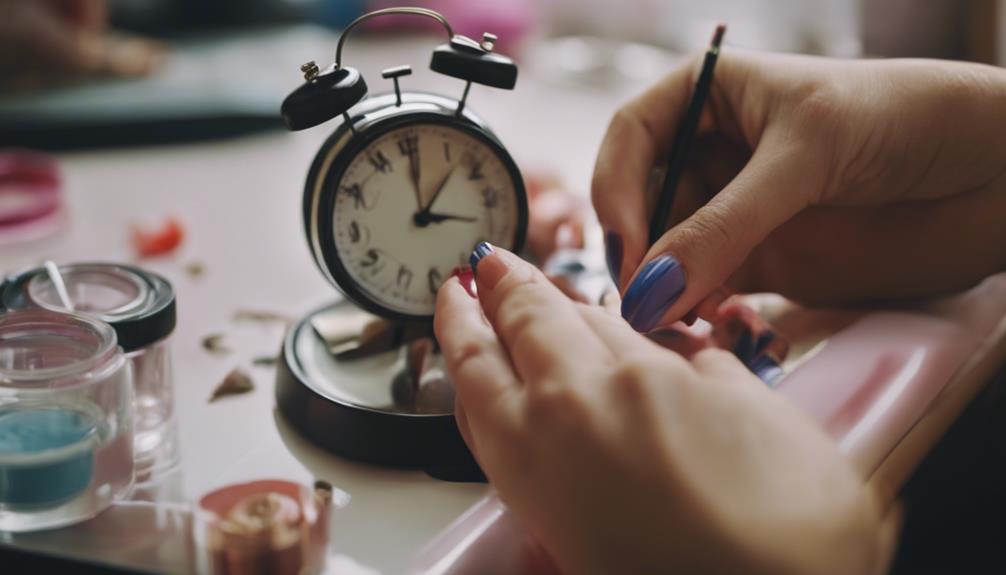
Inadequate drying time is a common factor contributing to the imperfect setting of nail polish. When nail polish is not given sufficient time to dry completely, it can lead to smudges, dents, and an overall unsatisfactory finish. Traditional nail polishes contain ingredients that require time to evaporate, allowing the polish to harden and adhere to the nail surface effectively. Without this crucial drying period, the polish remains vulnerable to disruptions, compromising the desired manicure.
To address the issue of insufficient drying time, innovative solutions have emerged in the beauty industry. Quick-dry nail polish formulas incorporate technologies that accelerate the evaporation process, reducing drying time significantly. These formulations often contain ingredients like fast-drying solvents or light-activated polymers that promote rapid setting without compromising on color intensity or durability.
Frequently Asked Questions
Can Using a Hairdryer or Blowing on My Nails Help to Speed up the Drying Process?
Harness the power of airflow to expedite the nail polish drying process. Utilize a hairdryer or gentle blowing motion to enhance evaporation. The strategic application of air can promote efficiency and precision in achieving beautifully polished nails.
Are There Any Specific Nail Polish Brands or Formulas That Dry Faster Than Others?
Some nail polish brands and formulas are designed to dry faster than others. Look for brands that offer quick-dry or gel-like formulas. Ingredients like nitrocellulose and specific solvents can contribute to a quicker drying time, providing a more efficient application process.
How Does the Thickness of the Nail Polish Brush Strokes Affect Drying Time?
The thickness of nail polish brush strokes directly impacts drying time, influencing the amount of air reaching the polish. This critical variable in application technique can significantly affect the speed at which your nail polish dries.
Can Applying a Top Coat or Quick-Dry Drops Help My Nail Polish Dry Faster?
Applying a top coat or quick-dry drops can significantly help accelerate the drying process of nail polish. These innovative products create a protective barrier, sealing in color and reducing drying time, allowing for a faster and more efficient nail painting experience.
Are There Any DIY Hacks or Home Remedies That Can Help Speed up the Drying Process of Nail Polish?
There are various DIY hacks and home remedies that can accelerate the drying process of nail polish. Techniques such as using ice water baths, applying cooking spray, or utilizing a hairdryer on a cool setting can expedite drying time.


